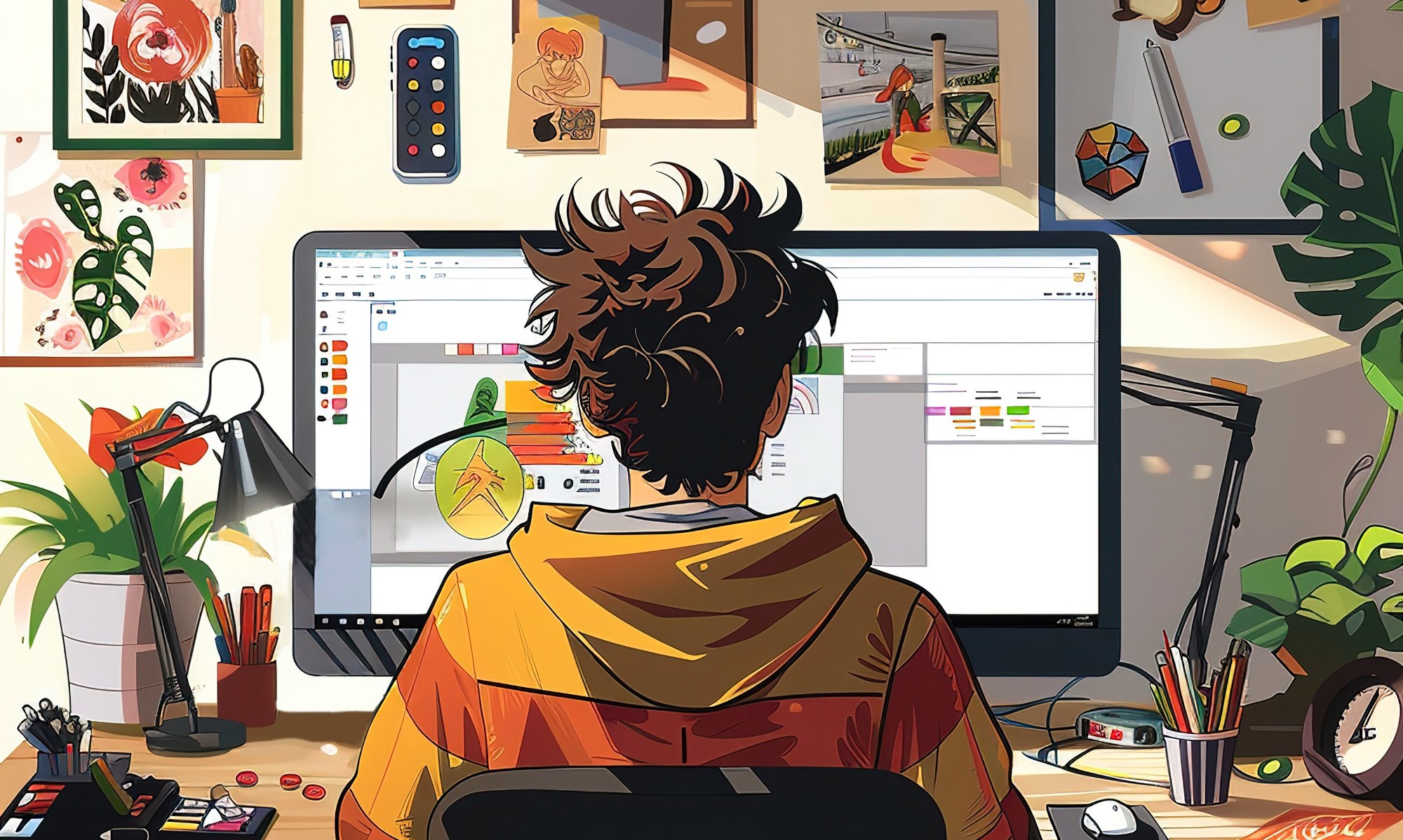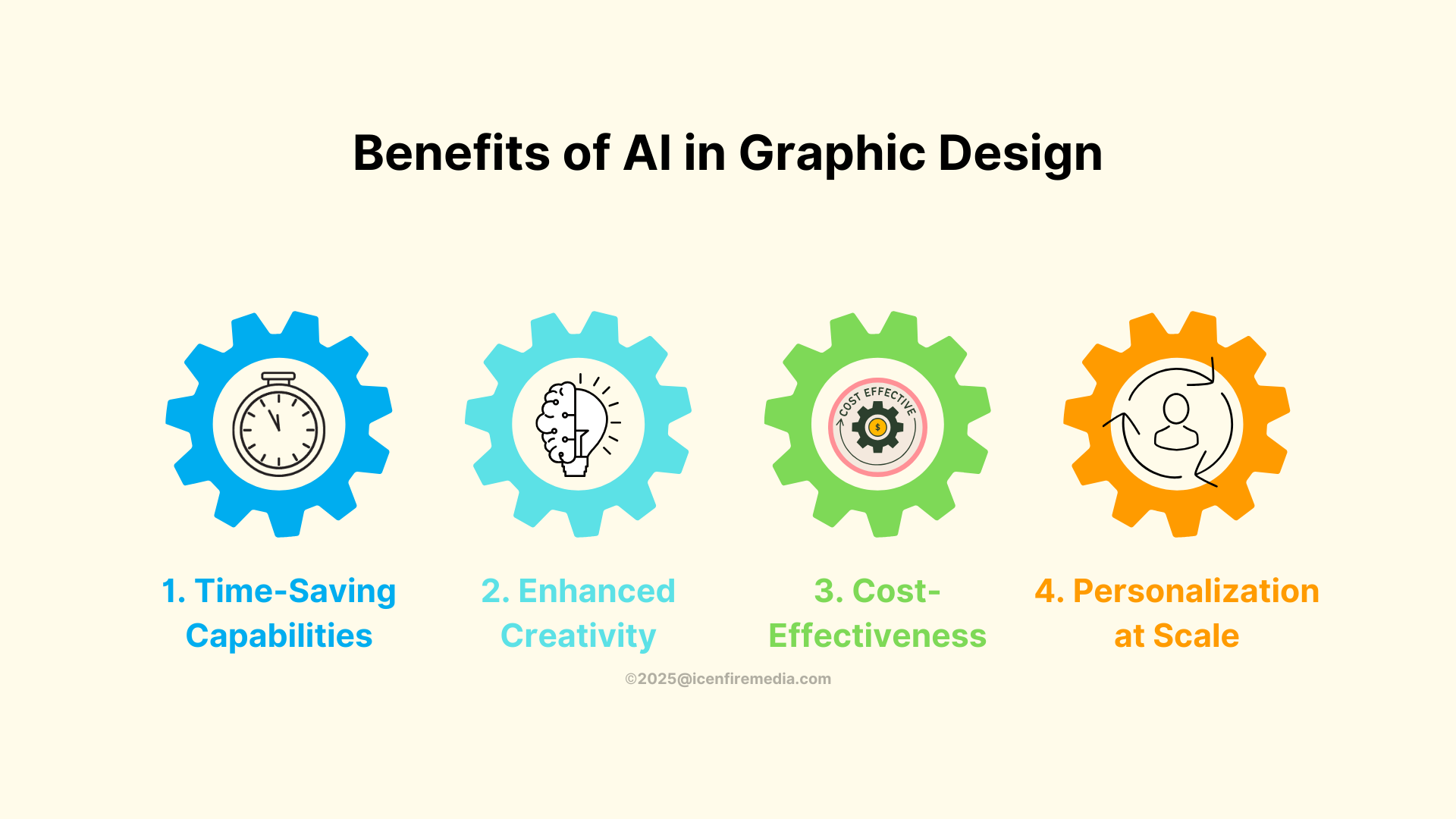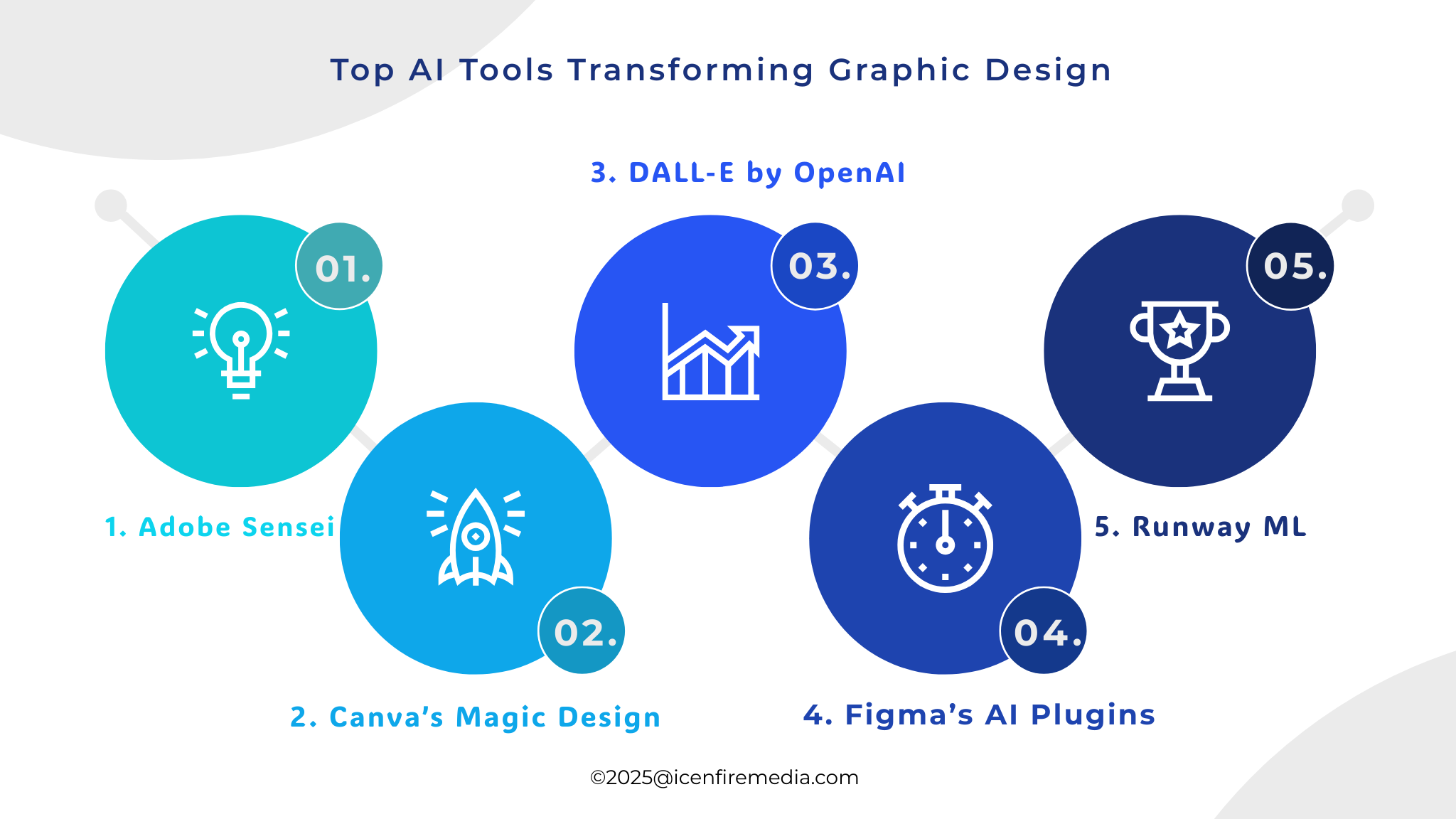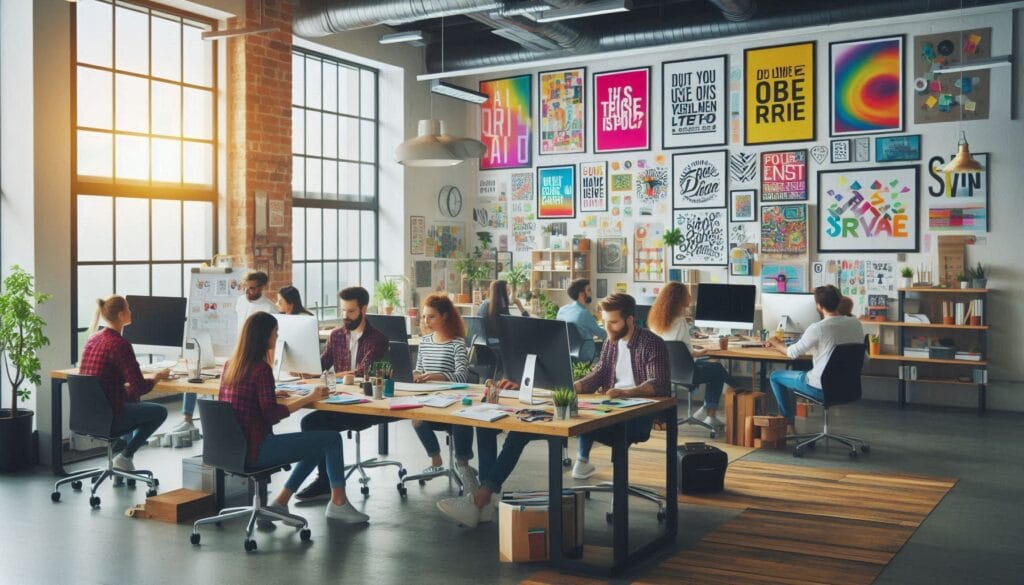
The world of graphic design is undergoing a seismic shift, thanks to the rapid advancements in AI-powered graphic design solutions. What was once a field dominated by human creativity, meticulous handwork, and years of skill-building is now being redefined by artificial intelligence graphic design tools that can generate high-quality visuals in minutes.
From automated image enhancements to AI-generated artwork, the role of AI in graphic design has expanded far beyond simple filters or templates. Today, AI can analyze design trends, suggest layouts, and even create original visuals—all while saving time and effort. But does this mean human designers will become obsolete? Absolutely not. Instead, the industry is witnessing an exciting partnership where AI enhances human creativity rather than replacing it.
In this blog, we’ll explore how AI-driven design trends are shaping the industry, the best tools available, and what the future holds for designers in this AI-powered era.
The Role of AI in Modern Graphic Design
The integration of machine learning in creative design has opened up endless possibilities for graphic designers. AI is no longer just a tool for minor touch-ups; it’s a powerhouse that transforms entire workflows.
- Speed and Efficiency: Tasks that used to take hours—such as background removal, object resizing, or color corrections—are now automated, allowing designers to focus on creative aspects rather than tedious edits.
- Smart Design Suggestions: AI analyzes user preferences and suggests layouts, typography, and color schemes based on real-time trends. This is particularly useful for businesses looking to maintain a strong visual identity.
- Automated Content Generation: Tools like automated graphic design software can generate entire templates based on a few input parameters, making it easier than ever to produce professional-gbrade marketing materials.
AI isn’t here to take over creativity; it’s here to enhance creativity by automating repetitive tasks and allowing designers to push the boundaries of visual storytelling.
Benefits of AI in Graphic Design

Embracing AI in graphic design comes with several advantages that make it an essential part of the modern creative workflow.
1. Time-Saving Capabilities
AI automates repetitive tasks such as resizing images, creating multiple variations of a design, and even generating content suggestions. This efficiency allows designers to spend more time on their projects’ artistic and strategic aspects.
2. Enhanced Creativity
AI isn’t just about automation; it’s also about inspiration. By using AI-powered graphic design solutions, designers can explore innovative styles, get AI-generated mood boards, and receive intelligent recommendations on color schemes and typography.
3. Cost-Effectiveness
Hiring a full-time designer or outsourcing every design project can be expensive for startups and small businesses. AI tools provide affordable alternatives, allowing users to create high-quality visuals without a hefty price tag.
4. Personalization at Scale
AI makes it easier to create customized visuals for different audience segments. With AI, businesses can generate personalized graphics, social media ads, and marketing materials tailored to specific demographics in seconds.
Also read:
- How Graphic Design Shapes Your Brand Identity
- Top 10 Graphic Design Websites for Graphic Designing
- What is Graphic Design? Everything You Need to Know
Key AI Technologies Revolutionizing Graphic Design
The advancements in the AI revolution in graphic design are driven by cutting-edge technologies that allow machines to think, learn, and create alongside human designers.
1. Machine Learning in Creative Design
AI learns from user interactions, continuously improving its design recommendations. Over time, it can predict which styles, colors, and compositions will work best for a specific project.
2. Natural Language Processing (NLP)
With the rise of AI chatbots and NLP-driven design assistants, users can simply type a request—like “Create a modern logo with a tech-inspired theme”—and AI will generate multiple design options.
3. Generative AI
AI tools like DALL-E and MidJourney can create entirely new, unique visuals from text prompts. These tools are revolutionizing branding and content creation by offering one-of-a-kind imagery that doesn’t exist anywhere else.
4. Predictive Analytics
AI-driven analytics help designers make data-backed design choices by predicting trends and consumer preferences, ensuring that their work remains relevant and engaging.
Top AI Tools Transforming Graphic Design

The rise of AI-powered graphic design solutions has led to the development of some truly game-changing tools. Whether you’re a seasoned designer or a business owner looking for quick design solutions, these AI-driven platforms are making creativity more accessible than ever.
1. Adobe Sensei
Adobe has integrated AI in graphic design through its Adobe Sensei technology, which powers intelligent features across Photoshop, Illustrator, and InDesign. With automatic background removal, content-aware fill, and font recommendations, Adobe Sensei helps designers work smarter, not harder.
2. Canva’s Magic Design
Canva has long been a go-to for beginners and professionals, and its Magic Design AI feature takes it to the next level. Users can simply upload an image or enter a few details, and Canva’s AI suggests perfectly designed templates tailored to their needs.
3. DALL-E by OpenAI
This AI revolution in graphic design includes tools like DALL-E, which generates unique and high-quality visuals from text descriptions. Need an original illustration or concept art? Just describe what you want, and AI will create it instantly.
4. Figma’s AI Plugins
Figma has embraced AI-driven design trends with smart plugins that assist with everything from auto-layouts to design suggestions, improving workflow efficiency for collaborative teams.
5. Runway ML
For those interested in advanced visual effects and animation, Runway ML uses machine learning in creative design to simplify complex editing tasks. It enables designers to generate animations, remove objects from videos, and create stunning visuals with minimal effort.
AI’s Impact on Graphic Design Trends
As AI in graphic design continues to evolve, it’s shaping some of the biggest industry trends:
1. Rise of Generative Design
AI-generated designs are now being used in branding, digital marketing, and even architecture, allowing for the creation of highly customized, data-driven visuals.
2. Interactive and Immersive Experiences
With AI-driven design trends, brands are using AI to create interactive brochures, personalized video ads, and dynamic marketing materials that adjust based on user interaction.
3. Personalization in Marketing
AI allows businesses to design hyper-personalized campaigns, delivering customized graphics to specific audience segments in real-time.
Challenges and Ethical Considerations
Despite its many advantages, AI also brings some challenges that designers and businesses must consider.
1. Balancing AI and Human Creativity: While AI can generate designs instantly, it still lacks the emotional intelligence and cultural sensitivity of human designers. Finding the right balance between AI efficiency and human creativity is key.
2. Concerns About Originality and Plagiarism: AI-generated content raises questions about ownership and authenticity. Who owns an AI-created design? And how can brands ensure their visuals are truly unique?
3. The Need for Human Oversight: AI is a powerful assistant, but it’s not infallible. Designers must still refine AI-generated outputs to align with brand identity and storytelling.
The Future of Graphic Design with AI
Looking ahead, AI in graphic design will only continue to grow in influence, but rather than replacing designers, it will serve as an invaluable creative partner.
1. AI and Human Collaboration: Designers who embrace AI tools will have a competitive edge, using AI to streamline workflows while maintaining creative control.
2. Smarter Design Tools: Future AI-powered graphic design solutions will feature even more intuitive interfaces, real-time collaboration, and predictive design capabilities.
3. AI-Generated Art and Branding: As AI evolves, it may become a core part of branding strategies, generating logos, marketing materials, and even website layouts tailored to individual brands.
Conclusion: Embracing AI in Graphic Design
The AI revolution in graphic design is here, and it’s transforming the way creatives work. By automating tedious tasks, enhancing creativity, and enabling hyper-personalization, AI is not replacing designers—it’s giving them superpowers.
If you’re a graphic designer, marketer, or business owner, now is the time to embrace AI-powered graphic design solutions. The future belongs to those who can blend the best of AI with the irreplaceable ingenuity of human creativity.
Need help? Contact IceNFire Media now. Our industry experts and graphic designers with decade long experience are here to make your vision come alive and make your brand stand out among the rest.

Want stunning, AI-powered designs that make your brand stand out? Get expert graphic design services from Ice N Fire Media today!
FAQs
Some of the top AI-powered graphic design solutions include Adobe Sensei, Canva’s Magic Design, DALL-E, Figma’s AI plugins, and Runway ML.
No, AI enhances artificial intelligence graphic design tools, but human creativity, emotional intelligence, and strategic thinking remain irreplaceable.
AI reduces costs by automating tasks, allowing businesses to create high-quality visuals without needing full-time designers for every project.
Both! Beginners can use AI to simplify design tasks, while professionals leverage AI-driven design trends to improve efficiency and explore new creative directions.
AI still struggles with originality, cultural context, and complex artistic vision. Human oversight is essential to ensure authenticity and brand alignment.

